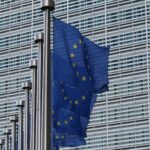Communism ditched, the countries of Central and Eastern Europe and Central Asia got richer fast—but now they risk getting stuck. After decades of impressive economic gains, twenty countries from the Balkans to the Caucasus face a growing threat: the notorious middle-income trap. Without bold reforms, warns a new World Bank report, their dream of joining the club of wealthy economies may remain permanently out of reach.
The report, Greater Heights: Growing to High Income in Europe and Central Asia, paints a stark picture of the challenges facing these middle-income countries. Growth rates have sagged dramatically since the global financial crisis of 2007–09. Demographic headwinds—rapid aging, declining birth rates, and large-scale emigration—are biting. Structural reforms have slowed. Worse, the global environment has turned hostile, with fragmented supply chains, protectionism, and geopolitical turmoil battering small, open economies.
As a result, income convergence with richer European countries has stalled. Without bold changes, stagnation looms.
Ivailo Izvorski, chief economist at the World Bank and lead author of the report, argues that to regain momentum, governments must tackle long-overdue foundational reforms. He says nations should not simply chase growth through capital investment, but rather shift to an economic strategy embracing infusion of foreign knowledge, expertise, and technology—and, crucially, genuine innovation.
The missing large
First, the private sector needs urgent revitalisation. Although Eastern European countries pride themselves on entrepreneurship, the reality falls short. Too many businesses are small, inefficient, and poorly managed—what the World Bank dubs a “missing large” problem.
Companies in Eastern Europe and Central Asia enter the market smaller and stay smaller than their counterparts elsewhere. While in America a firm grows sixfold in its first five years, in Eastern Europe it typically grows less than fourfold. This lack of scale throttles productivity growth.
The report highlights Estonia and Poland as positive examples. Estonia aggressively promoted startups through incentives for young, innovative firms, creating a thriving tech ecosystem. Firms like Bolt, Wise, and Skype flourished. Poland, too, has nurtured a dynamic private sector.
But elsewhere, the situation is grim. In countries like Serbia, Bosnia, or Bulgaria, the prevalence of inefficient small firms—often family-run businesses reluctant to innovate—is widespread, dampening overall economic dynamism.
Exacerbating this is the dominance of state-owned enterprises (SOEs), which crowd out private companies. In energy, SOEs control nearly all transmission and fossil fuel power generation, severely restricting competition. The report warns governments to discipline incumbents and boost competition authorities, allowing new entrants space to grow. Innovation depends on a level playing field, not protectionism.
Starved of capital
Access to capital remains another major obstacle. Eastern European firms struggle to find long-term financing, while risk capital markets are woefully underdeveloped. In countries like Armenia, Georgia, or Moldova, venture capital investment is negligible, limiting startups’ capacity to scale or innovate. Banks, meanwhile, remain risk-averse and favour large incumbents. State-directed lending, especially in Central Asia, further distorts markets by channelling resources to politically connected but inefficient firms.
The World Bank report urges governments to actively foster venture capital ecosystems, reform financial regulations, and reduce state interference in lending practices. Estonia again provides a positive example, having developed efficient digital banking and venture capital markets that offer innovative entrepreneurs opportunities to scale their businesses rapidly.
Talent wasted, mobility stalled
Education is another urgent priority. Thirty years ago, Eastern Europe was renowned for high literacy rates and strong basic skills. But quality has deteriorated alarmingly in recent decades. According to the Programme for International Student Assessment (PISA), students in the region lost the equivalent of an entire year of learning over the past decade.
Even countries once known for educational excellence, such as Russia and Ukraine, have seen PISA scores plummet.
Vocational education systems have proved particularly problematic. Students are funnelled into rigid vocational tracks at a young age, locking them into outdated career paths. Employers increasingly complain of mismatches between skills taught in schools and those needed in rapidly evolving markets. Bulgaria and Romania are examples of countries where vocational education, long championed as a gateway to employment, instead traps students in declining industries.
Higher education faces similar woes. Many universities across the region have proliferated without adequate quality control, producing graduates with questionable skills. Only a handful of Eastern European universities rank in global top-500 lists.
Academic capture—where universities prioritise political or business interests over academic excellence—is common, stifling innovation and meritocracy.
Countries must urgently reform education, says the World Bank. Vocational tracking should be delayed to allow broader education before career specialisation. Universities should consolidate, merge with research institutes, and become accountable for employment outcomes. Estonia, again, shows the way forward with its close collaboration between universities, research centres, and private companies, leading to vibrant innovation hubs such as the Tallinn Science Park.
Social mobility, too, must improve. The report warns that without the belief that education guarantees a better future, populations become discouraged, disengaged, and resistant to reform. Today’s youth risk becoming the first generation in Eastern Europe and Central Asia less educated than their parents. Governments need to reassure citizens that merit, not background or connections, determines success.
Energy blues
Energy inefficiency remains perhaps the most overlooked barrier to growth. Eastern Europe and Central Asia is the world’s most energy-intensive developing region. An average Eastern European country requires 1.5 times more energy per unit of GDP than East Asian economies, and 2.5 times more than EU countries. Antiquated infrastructure, wasteful state monopolies, and heavy fossil fuel subsidies keep energy costs high and innovation low.
Energy subsidies disproportionately benefit large incumbents, notably state-owned firms in coal and gas. Renewable energy producers face countless bureaucratic hurdles to enter markets, preventing efficient investment in cheaper, cleaner energy.
Poland and Turkey, which recently boosted wind and solar capacity dramatically, prove reform is possible. Yet other countries, such as Uzbekistan and Serbia, continue to rely heavily on inefficient coal plants and monopolistic state utilities.
The World Bank advocates removing fossil-fuel subsidies, introducing carbon pricing, and making markets more competitive. This will involve politically difficult decisions, requiring governments to carefully sequence reforms and provide targeted income support for vulnerable groups.
Facing reality
The reality facing Eastern Europe’s middle-income countries is stark. They are not poor anymore, but without sweeping structural reforms, their rise may plateau. The EU accession path, once seen as a guaranteed growth elevator, is slower and less predictable today. Populist politics and external shocks—from pandemics to wars—compound the challenge. But the rewards for reform are clear.
Countries such as Estonia, Poland, and Romania, that have embraced private-sector dynamism, educational quality, and innovation, are already reaping rewards.
The alternative—continued stagnation, loss of talent, and decline—is unthinkable. Governments must summon the political courage to overhaul markets, education, and energy sectors before the middle-income trap becomes permanent.
For the twenty countries on the threshold, the time to act is now—before the trap snaps shut.
Photo by Vlad Sargu on Unsplash.







